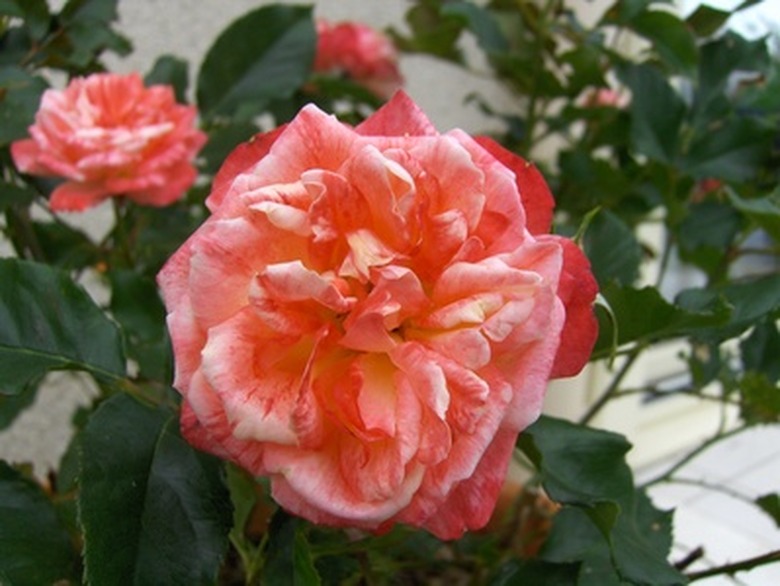Variegated Rose Bushes
Roses are traditional additions to many gardens, and seem to be an easy choice for someone who's planting flowers. But the rose family incorporates a dizzying array of choices, in regard to bush or vine, size, color, tolerances and bloom appearance. Variegated roses offer another choice, as a mutation that occurs both in nature and through selective breeding.
Features
Variegated roses are standard roses that display striped or mottled flowers. The blooms may incorporate different shades of the same color or a variety of different colors. This hybrid occurs both naturally and through selective breeding.
History
According to Old Garden Roses and Beyond, no one truly understands how this mutation originally took place. Possibilities include a natural change, roses seeking to return to their original color, and rose viruses. Roses are bred for variegation through cross-pollination in controlled environments.
- Roses are traditional additions to many gardens, and seem to be an easy choice for someone who's planting flowers.
- Variegated roses offer another choice, as a mutation that occurs both in nature and through selective breeding.
Types
Some standard and popular variegated rose varieties include Vick's Caprice, Lambelin, Rainbow, Rosa Mundi, York and Lancaster. Many Old Gallica roses are naturally striped as well.
Bush Versus Climbing
Since the term "variegated" refers only to bloom color and pattern, a variegated rose's form adheres to the same rules as that of a standard rose. Variegated roses may be bushes–shrubs that grow in a roughly vase shape up to 6 feet–or climbing–wood bases that grow clinging, reaching vines.
Growing Needs
Variegated roses require six to eight hours of sun every day for full blooming, and do best in quick-draining areas with rich, loose soil. According to the University of Illinois, roses should receive two to four feedings a year and 2 inches of water a week.
Water Rose Bushes?
Gardeners grow roses either in containers or directly in the ground. Roses grown in containers as accent pieces have the same watering requirements as their in-ground cousins. They require fertilization both at the time of planting and throughout the growing period. Post-fertilizing irrigation helps to carry the rose fertilizer down to the rose bush's roots, and it also helps to reduce the risks of nitrogen burns to the rose bush's above-ground canes and plant tissue. For the best results, schedule irrigation in the early morning.
- Some standard and popular variegated rose varieties include Vick's Caprice, Lambelin, Rainbow, Rosa Mundi, York and Lancaster.
- Variegated roses require six to eight hours of sun every day for full blooming, and do best in quick-draining areas with rich, loose soil.
References
- University of Illinois Extension: Our Rose Garden: Water, Mulch and Fertilizer
- Clemson Cooperative Extension: Growing Roses
- Old Farmer's Almanac: Roses
- University of Missouri Extension: Roses – Care After Planting
- Texas A&M Extension: Rose Gardening in Containers
- University of Missouri Extension: Watering Roses
- Rose.org: Proper Rose Care
- University of Illinois Extension: Our Rose Garden – Water, Mulch & Fertilizer
- Colorado State University Extension: Growing Roses in Containers
